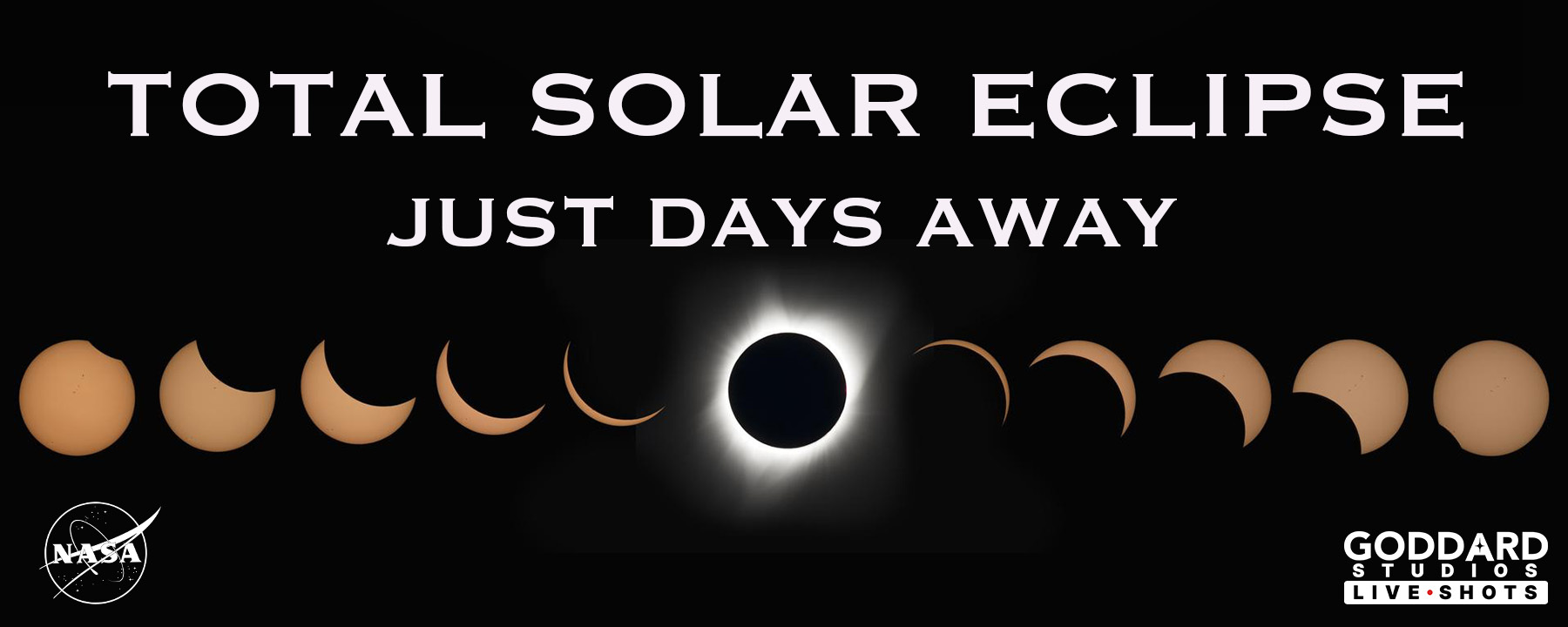Locations of Planets and Comet During Totality on April 8, 2024
During the total solar eclipse on April 8, 2024, sharp-eyed observers might spot some planets in the darkened sky near the eclipsed Sun.
Jupiter and Venus, on opposite sides of the Sun, will be the brightest and easiest to spot. Jupiter will appear about 30 degrees to the upper left of the eclipsed Sun while Venus will appear about 15 degrees to the lower right of the eclipsed Sun.
Fainter Mars and Saturn will appear next to one another about 35 degrees to the lower right of the eclipsed Sun, but they might be challenging for most to see. Mercury and Comet 12P/Pons-Brooks will also be in the sky to the upper left of the eclipsed Sun, but they will likely be too faint to see without binoculars or a telescope.
For more information about safely watching the eclipse, either directly or with binoculars or a telescope, visit go.nasa.gov/Eclipse2024Safety.

Jupiter, Venus, Saturn, and Mars could be visible to the unaided eye during totality on April 8, 2024. Mercury (to the upper left of the eclipsed Sun) and Comet 12P/Pons-Brooks (to the right of Jupiter), not labeled here, will likely be too faint to see without binoculars or a telescope.
Credit: NASA/JPL-Caltech

During totality on April 8, 2024, Jupiter will appear about 30 degrees to the upper left of the eclipsed Sun while Venus will appear about 15 degrees to the lower right of the eclipsed Sun. Mars and Saturn will be next to one another about 35 degrees to the lower right of the eclipsed Sun. Mercury (to the upper left of the eclipsed Sun) and Comet 12P/Pons-Brooks (to the right of Jupiter), not labeled here, will likely be too faint to see without binoculars or a telescope.
Credit: NASA/JPL-Caltech

Jupiter and Venus will stand out as bright points to the upper left and lower right of the eclipsed Sun, respectively, on April 8, 2024. Comet 12P/Pons-Brooks, Mercury, Saturn, and Mars will be much fainter.
Credit: NASA/JPL-Caltech

On April 8, 2024, Jupiter will appear about 30 degrees to the upper left and Venus about 15 degrees to the lower right of the eclipsed Sun. Mars and Saturn will be next to one another about 35 degrees to the lower right of the eclipsed Sun. Comet 12P/Pons-Brooks and Mercury will appear to the upper left but will likely be too faint to see with the unaided eye.
Credit: NASA/JPL-Caltech
Credits
Please give credit for this item to:
NASA's Scientific Visualization Studio
-
Writer
- Vanessa Thomas (KBR Wyle Services, LLC)
-
Designers
- Lisa Poje (USRA)
- Kristen Perrin (TRAX International)
-
Producers
- Abbey A. Interrante (ADNET Systems, Inc.)
- Preston Dyches (NASA/JPL-Caltech)
Release date
This page was originally published on Tuesday, April 2, 2024.
This page was last updated on Monday, April 1, 2024 at 5:16 PM EDT.

![Watch this video on the NASA Goddard YouTube channel.Complete transcript available.Music credit: "Back From The Brink" by Daniel Gunnar Louis Trachtenberg [PRS], “Hive Mind” by Ben De Vries [PRS] and Cam Tigre [PRS] from Universal Production MusicAdditional footage: NASA EDGESound effects: Pixabay](/vis/a010000/a014500/a014532/Thumbnail.jpg)